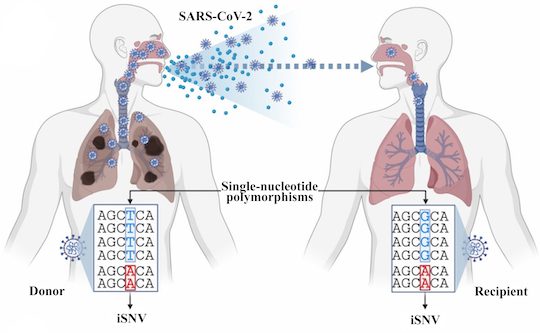Variabel, a novel approach and first method designed for rescuing low frequency intra-host variants from Oxford Nanopore Technologies (ONT) data alone. Details about variants hidden in the deluge of genetic SARS-CoV-2 sequences might be helpful if researchers can find them.
A new program developed at Rice University’s George R. Brown School of Engineering will make it possible, at least for “intrahost variants,” those that appear in genome data from the same COVID-19-positive person.
Variabel was developed by a Rice team led by computer scientist Todd Treangen and graduate student Yunxi Liu. It accurately detects “low-frequency variants” of the virus that causes COVID-19.

Image Source: https://news.rice.edu/news/2022/covid-19-variants-cant-hide-variabel
Finding these hints could be crucial in spotting potentially deadly mutations before they spread, according to Treangen.
The information is openly accessible to the public, but there is a lot of it. ONT which provides an affordable technology for rapid sequencing of single, lengthy molecules of DNA or RNA, gathered an estimated half-million SARS-CoV-2 genomes for the study.
“Variabel directly enables the use of affordable nanopore sequencing technology for the identification of within-host variation after viral infection,” said Treangen, whose work has focused on infectious disease monitoring since long before the COVID-19 pandemic.
Variabel performed similarly well when tested on sequence data from Ebola and norovirus patients.
The researchers assert that the significance o to Variabel is its ability to distinguish true variants from sequencing errors in the ONT process.
They analyzed data from single positive patients across time and sequences from cross-patient datasets collected by ONT and another sequencing technique, Illumina, to confirm Variabel. A single patient can harbor up to a billion copies of a virus over time.
They discovered that the computer could fix the vast majority of sequencing errors by comparing findings before and after applying Variabel to the data.
“Variabel opens the door to portable, affordable, and rapid characterization of within-host variation, which ultimately could aid in the discovery of future mutations specific to variants of concern,” said Treangen.
The open-source program, detailed in Nature Communications, is available for download at https://gitlab.com/treangenlab/variabel.
Story Source: Liu, Y., Kearney, J., Mahmoud, M. et al. Rescuing low frequency variants within intra-host viral populations directly from Oxford Nanopore sequencing data. Nat Commun 13, 1321 (2022). https://doi.org/10.1038/s41467-022-28852-1
https://news.rice.edu/news/2022/covid-19-variants-cant-hide-variabel
Dr. Tamanna Anwar is a Scientist and Co-founder of the Centre of Bioinformatics Research and Technology (CBIRT). She is a passionate bioinformatics scientist and a visionary entrepreneur. Dr. Tamanna has worked as a Young Scientist at Jawaharlal Nehru University, New Delhi. She has also worked as a Postdoctoral Fellow at the University of Saskatchewan, Canada. She has several scientific research publications in high-impact research journals. Her latest endeavor is the development of a platform that acts as a one-stop solution for all bioinformatics related information as well as developing a bioinformatics news portal to report cutting-edge bioinformatics breakthroughs.





